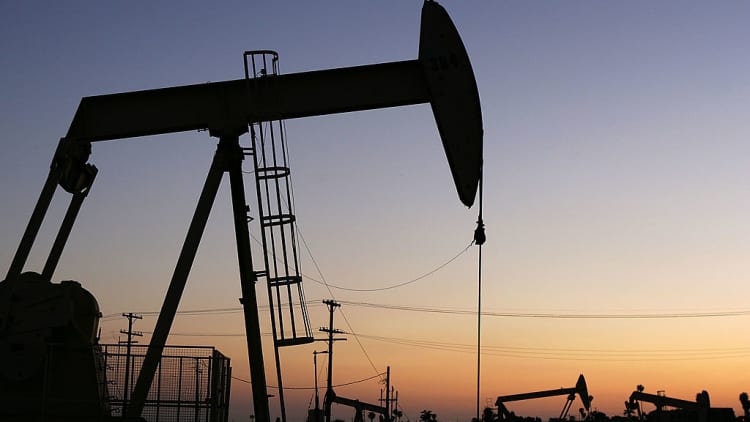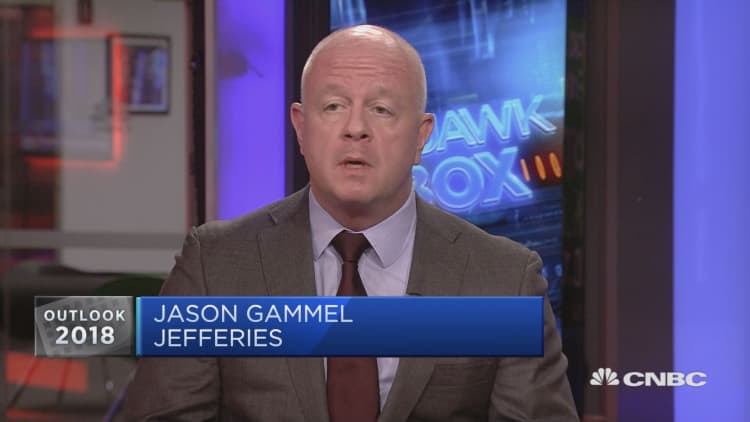Oil prices ticked higher on Thursday, erasing earlier losses after the operator of Britain's Forties pipeline in the North Sea said it was expected to restart in early January after repairs over Christmas.
Forties is the largest of the five North Sea crudes that underpin Brent, a benchmark for oil trading in Europe, the Middle East, Africa and Asia.
"Main feature in today's trade thus far appears to be the ability of the complex to absorb in orderly fashion reports that the North Sea Forties pipeline system will be restarted," Jim Ritterbusch, president of Chicago-based energy advisory firm Ritterbusch & Associates, said in a report.
Brent crude prices were up 35 cents at $64.91 per barrel at 2:29 p.m. ET. U.S. West Texas Intermediate (WTI) crude futures ended Thursday's session at $58.36 a barrel, up 27 cents at a nearly three-week high.
Both benchmarks were trading at their highest since Dec. 12 after rising most days since the start of the Forties shutdown.

"Initially a small number of customers will send oil and gas through the pipeline at low rates as part of a coordinated plan that allows Ineos to carefully control the flow into the system," operator Ineos said in a statement.
"Based on current estimates the company expects to bring the pipeline progressively back to normal rates early in the new year," it said.
The system, which carries around 450,000 barrels per day of crude to Britain, along with a third of the UK's total offshore natural gas output, was closed after a routine inspection revealed a crack in an onshore section.
Ineos on Dec 13 was forced to declare force majeure on deliveries of Forties crude oil, natural gas and condensate, suspending its contractual obligations to customers due to circumstances beyond its control.
The privately owned chemicals company based in Switzerland bought the pipeline system from BP in late October.
Oil prices were also supported by falling crude inventories in the United States but capped by output that is fast approaching 10 million barrels per day, a level only surpassed by Saudi Arabia and Russia.

Both crudes gained around 1 percent during their previous sessions, lifted by official data showing a 6.5 million-barrel fall in U.S. crude inventories in the week to Dec. 15 to 436 million barrels, the lowest level since October, 2015.
Countering this on Thursday was another increase in U.S. crude oil production, while a rise in gasoline stocks pointed to a slowdown in demand.
"The rally which has defined H2 looks to have run out of steam as the year draws to a close, and we might be hard pressed to say where further upside can come from at this point, barring some unforeseen supply outage," JBC Energy said in a note.
The energy minister of Saudi Arabia, the world's top crude exporter and OPEC's de-facto leader, said it would take more time to rein in global oversupply, which was created by strong global production increases in the years up to 2015.
"We expect the first few months of 2018 to be either flat or a build (in inventories), as it is typically the case with the seasonality in the oil market," Khalid al-Falih told Reuters on Wednesday.
— CNBC's Tom DiChristopher contributed to this report.

